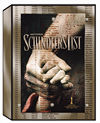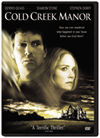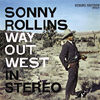Latest Software Reviews
 DVD: Schindler's List—Universal
DVD: Schindler's List—UniversalVideo: 4
Audio: 3
Extras: 4
The excitement I felt when I heard that Schindler's List was finally coming to DVD was quickly replaced by a sense of dread when I realized that, in order to review the disc, I'd have to watch the film. Don't misunderstand. I have nothing but the highest regard for this cinematic masterpiece, but it's not exactly a casual, fun evening in front of the tele. Schindler's List is meant to devastate you, to break your heart by putting a human face on so many of the faceless victims of the Holocaust. Devastate you it will, but you're better off for having witnessed it.
The basic $27 DVD doesn't adhere to traditional standards. Rather than including an extras package that salutes the filmmakers and cast, the DVD adheres to the film's spirit by focusing on the real people involved: There's a short text bio of Oskar Schindler and a riveting 77-minute documentary in which the surviving Schindlerjuden recount their personal experiences. These interviews were conducted by the Survivors of the Shoah Visual History Foundation, whose work is documented in another short featurette. The $80 Collector's Gift Set adds the CD soundtrack, a collectible booklet of photos, and a limited-edition senitype.
If you can focus on audio and video quality during this film, you're a stronger theaterphile than I—but I did my best. To help this three-hour-plus film look its best, Universal spread the 1.85:1 anamorphic video, Dolby Digital 5.1 and DTS soundtracks (plus two language tracks), and bonus material over both sides of a DVD-18 disc. The black-and-white video is richly detailed with great contrasts, but I did see the occasional shimmering artifact. Dialogue and music sound good through the front three channels. Surround use is minimal but effective, particularly when the silent surround field suddenly jolts to life with a single gunshot.
Schindler's List may not be a film you'll watch often, but you should sit down and watch it once in a while, as it reminds us of just how far our hatred, fear, and apathy can take us and just how important one person can be. It belongs in your collection.—Adrienne Maxwell
 DVD: Cold Creek Manor—Buena Vista
DVD: Cold Creek Manor—Buena Vista
Video: 3
Audio: 3
Extras: 3
In this psychological thriller, Dennis Quaid and Sharon Stone star as Cooper and Leah Tilson, who move their family into an old house in the country and discover that the previous inhabitants aren't completely ready to leave their humble abode. While not exactly the best movie I've ever seen, it was a refreshing break to watch actual people act rather than relying on amazing computer graphics to tell the story.
The 1.85:1 anamorphic video presents the country setting nicely. The colors are accurate and vivid. Close-ups are particularly detailed. No offense to the two leads, but wrinkles, laugh lines, and five-o'-clock shadows were especially crisp. Backgrounds do become mushy, for lack of a better word, in some scenes, but it's nothing that will prompt you to turn off the movie.
The Dolby Digital 5.1 soundtrack didn't give my surrounds much to do, except in some instances when the "creepy thriller music" comes on to set the scene. I did, however, sit up and take notice during the "Night Chase" scene. The rambling truck brushes against trees and shrubs as it speeds down a dirt road. As the truck moves from the far right of the road to the far left, the sound moves from the right to left surround speaker.
The DVD also offers some neat extras. Director Mike Figgis sits down for a commentary track. Two featurettes—including a "Rules of the Genre" how-to on creating a psychological thriller—deleted scenes, and an alternate ending complete the features. —Amy Carter
 SACD: Sonny Rollins—Way Out West (Analogue Productions)
SACD: Sonny Rollins—Way Out West (Analogue Productions)
It seems like most of the labels are constantly remastering their back catalog, but this gambit only pays off when the recording itself is truly special. Sonny Rollins' Way Out West more than qualifies. It's regarded as the saxophonist's strongest early effort, and it sounds even better on this new hybrid SACD. Rollins' freewheelin' tenor sax runs the show, but bassist Ray Brown and drummer Shelly Manne provide flexible support across a set of standards and original tunes. Extras are limited to three alternative tracks.
West was recorded in one late-night session on March 7, 1957, at the dawn of the stereo era. That explains why the mix places Rollins hard left, Brown and Manne way over on the right, and nothing in the center. No matter, you can easily sense the energy transfer between the three men, and Rollins' sound has never been more vividly rendered. Since the instruments weren't close-miked, you can hear Rollins move as he wails away – just as you would if you were in the room with him.
This SACD reveals the musician's dynamic shadings like never before. Stereo it is, but the sound is so three-dimensional that I didn't mind the lack of a 5.1 surround mix. To be honest, I'm thankful they didn't tamper with this classic. I've heard too many botched attempts. The whole affair feels very live, very in the moment—you know, like a jazz record.—Steve Guttenberg
























































